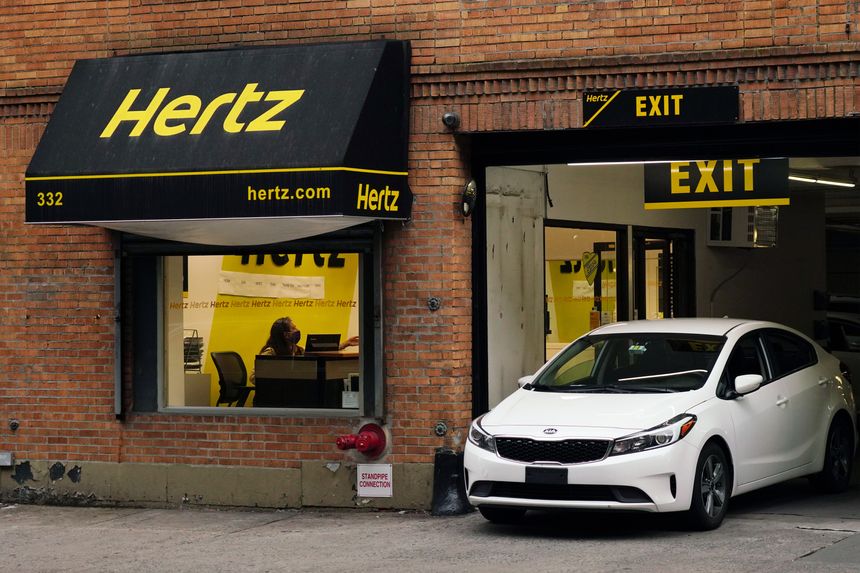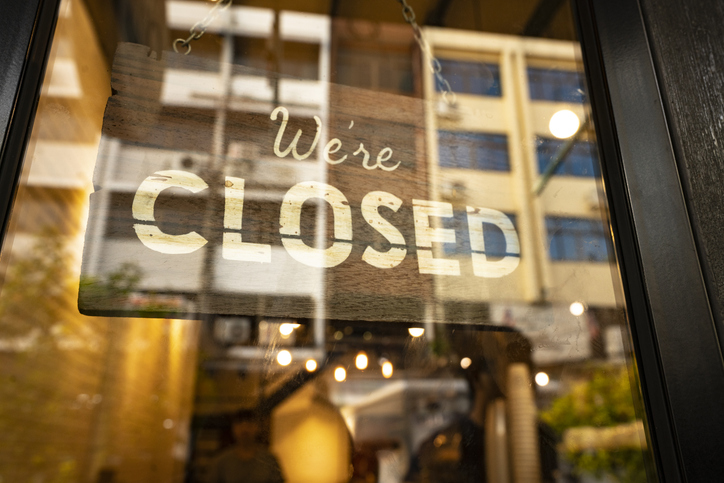Tesla Surpasses US$1 Trillion in Market Value
Hertz ordered 100,000 vehicles from the electric marque.
Tesla Inc. crossed US$1 trillion in market value Monday, joining a select group of companies after its stock price more than doubled this past year on surging vehicle sales and rising profits.
Investors pushed the electric-vehicle maker over the line after Hertz Global Holdings Inc. ordered 100,000 autos to be delivered to the rental-car company by the end of next year, a bulk purchase that promises to expose more mainstream drivers to Tesla’s technology.
Apple Inc. Microsoft Corp., Amazon.com Inc., Google parent Alphabet Inc. are the only other U.S. companies worth more US$1 trillion. Facebook Inc. was part of the group, though its share price has since retreated. Tesla, which last week reported record quarterly profit, is worth more than the next nine largest auto makers by market capitalization combined.
“Wild $T1mes!” Tesla Chief Executive Elon Musk tweeted Monday afternoon. He added, of the Hertz order: “Strange that moved valuation, as Tesla is very much a production ramp problem, not a demand problem.”
Tesla’s stock closed at $1024.86, up more than 12% on the day and giving the company a market value of $1.03 trillion.
Tesla’s valuation has soared unusually quickly. It took less than two years for Tesla’s market value to grow from $100 billion to $1 trillion, according to Dow Jones Market Data. By contrast, it took Amazon more than eight years to cover that ground.
The run-up in Tesla’s share price has benefited Mr. Musk, the company’s largest shareholder and world’s wealthiest person. Mr. Musk’s Tesla holdings, including vested and unvested options, were worth roughly US$297 billion as of Monday, according to corporate-governance data company Equilar Inc. That is more than the valuation of Toyota Motor Corp., the second-largest automaker by market capitalization.
Hertz’s Tesla order is part of a broader effort by the rental company to give customers more battery-powered options on rental-car lots.
The Estero, Fla., company said that starting in early November and expanding through the end of the year, Hertz customers will be able to rent a Tesla Model 3 at airports and other locations in major U.S. markets and some cities in Europe.
Financial terms of the deal between Hertz and Tesla weren’t provided. Based on list prices, the cost to Hertz would top $4 billion; however, historically it is common for such bulk orders to include a discount for the rental-car company.
Electric vehicles will comprise more than 20% of the company’s global fleet with the current order, Hertz said Monday. The rental-car company said it introduced electric vehicles into its fleet in 2011.
The order represents a major chunk of Tesla’s annual production volume, which has been growing in recent years. The electric-car maker delivered nearly half a million vehicles globally last year and, based on performance through September, is in a position to deliver nearly 900,000 vehicles to customers this year.
While the Hertz deal should allow more people to drive Teslas, it comes as scrutiny of Tesla’s advanced driver-assistance features has intensified. On Monday, the head of the National Transportation Safety Board doubled down on earlier criticism, chastising Tesla for not addressing what the agency views as safety deficiencies in the company’s driver-assistance technology.
“[O]ur crash investigations involving your company’s vehicles have clearly shown that the potential for misuse requires a system design change to ensure safety,” NTSB Chair Jennifer Homendy said in a letter to Mr. Musk.
The NTSB investigates crashes and makes safety recommendations but doesn’t have regulatory authority. The agency has urged Tesla to take additional steps to limit how drivers are able to use the company’s advanced driver-assistance technology, which doesn’t make vehicles autonomous.
Tesla didn’t respond to a request for comment about the letter.
Hertz’s purchase could help elevate its profile as it anticipates relisting on a major stock exchange by the end of the year. Hertz shares, which currently trade over the counter, rose roughly 10% to $27.17.
Hertz is making the investment after emerging from bankruptcy under new ownership. It filed for bankruptcy in May 2020 as the debt-laden company suffered from a collapse in reservations.
The expansion into electric vehicles is part of what the company defines as “the new Hertz,” which focuses on electrification, shared mobility and a digital-first experience, the company said. Hertz’s new owners seek to overhaul the century-old company, implementing new software to improve inventory management and better forecast customer demand.
“Electric vehicles are now mainstream, and we’ve only just begun to see rising global demand and interest,” said Mark Fields, Hertz’s interim chief executive. Mr. Fields, a former Ford Motor Co. CEO, took the role earlier this month.
The company said it also has partnered with Super Bowl champion Tom Brady for a marketing campaign for the electric-vehicle rentals.
Hertz warned that efforts to electrify its fleet could be hampered by factors outside its control, such as the shortage of semiconductors and other constraints.
Tesla has a network of charging stations for its vehicles to augment those people install in their homes. Tesla users, at times, have complained about long wait periods at charging facilities.
“While we certainly have work to do in expanding capacity in some congested areas, average congestion on the network has decreased over the past 18 months,” Tesla senior vice president Andrew Baglino said on an earnings call this month. The Tesla charging network, he said, has doubled over the past 18 months and the company plans for it to triple over the next two years.
Tesla says on its website that it has more than 25,000 charging stations worldwide, principally in North America and Europe. Hertz said it is also installing thousands of electric-vehicle chargers in its network.
Reprinted by permission of The Wall Street Journal, Copyright 2021 Dow Jones & Company. Inc. All Rights Reserved Worldwide. Original date of publication: October 25, 2021.
 Copyright 2020, Dow Jones & Company, Inc. All Rights Reserved Worldwide. LEARN MORE
Copyright 2020, Dow Jones & Company, Inc. All Rights Reserved Worldwide. LEARN MORE
This stylish family home combines a classic palette and finishes with a flexible floorplan
Just 55 minutes from Sydney, make this your creative getaway located in the majestic Hawkesbury region.
Continued stagflation and cost of living pressures are causing couples to think twice about starting a family, new data has revealed, with long term impacts expected
Australia is in the midst of a ‘baby recession’ with preliminary estimates showing the number of births in 2023 fell by more than four percent to the lowest level since 2006, according to KPMG. The consultancy firm says this reflects the impact of cost-of-living pressures on the feasibility of younger Australians starting a family.
KPMG estimates that 289,100 babies were born in 2023. This compares to 300,684 babies in 2022 and 309,996 in 2021, according to the Australian Bureau of Statistics (ABS). KPMG urban economist Terry Rawnsley said weak economic growth often leads to a reduced number of births. In 2023, ABS data shows gross domestic product (GDP) fell to 1.5 percent. Despite the population growing by 2.5 percent in 2023, GDP on a per capita basis went into negative territory, down one percent over the 12 months.
“Birth rates provide insight into long-term population growth as well as the current confidence of Australian families,” said Mr Rawnsley. “We haven’t seen such a sharp drop in births in Australia since the period of economic stagflation in the 1970s, which coincided with the initial widespread adoption of the contraceptive pill.”
Mr Rawnsley said many Australian couples delayed starting a family while the pandemic played out in 2020. The number of births fell from 305,832 in 2019 to 294,369 in 2020. Then in 2021, strong employment and vast amounts of stimulus money, along with high household savings due to lockdowns, gave couples better financial means to have a baby. This led to a rebound in births.
However, the re-opening of the global economy in 2022 led to soaring inflation. By the start of 2023, the Australian consumer price index (CPI) had risen to its highest level since 1990 at 7.8 percent per annum. By that stage, the Reserve Bank had already commenced an aggressive rate-hiking strategy to fight inflation and had raised the cash rate every month between May and December 2022.
Five more rate hikes during 2023 put further pressure on couples with mortgages and put the brakes on family formation. “This combination of the pandemic and rapid economic changes explains the spike and subsequent sharp decline in birth rates we have observed over the past four years,” Mr Rawnsley said.
The impact of high costs of living on couples’ decision to have a baby is highlighted in births data for the capital cities. KPMG estimates there were 60,860 births in Sydney in 2023, down 8.6 percent from 2019. There were 56,270 births in Melbourne, down 7.3 percent. In Perth, there were 25,020 births, down 6 percent, while in Brisbane there were 30,250 births, down 4.3 percent. Canberra was the only capital city where there was no fall in the number of births in 2023 compared to 2019.
“CPI growth in Canberra has been slightly subdued compared to that in other major cities, and the economic outlook has remained strong,” Mr Rawnsley said. “This means families have not been hurting as much as those in other capital cities, and in turn, we’ve seen a stabilisation of births in the ACT.”
This stylish family home combines a classic palette and finishes with a flexible floorplan
Just 55 minutes from Sydney, make this your creative getaway located in the majestic Hawkesbury region.






















